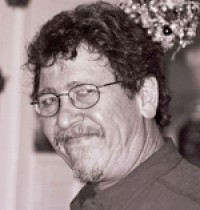Gerry Weitz, longtime IT leader, dies at 67.
Gerry Weitz, longtime IT leader, dies at 67
Gerry Weitz, director emeritus of IRT Administrative Systems for the School of Medicine, died of a stroke Feb. 8 in Albany, Calif. He was 67.

Gerry Weitz
A memorial service will be held from 2-4 p.m. on March 3 at the Millie and Paul Berg Hall in the Li Ka Shing Center for Learning and Knowledge.
Weitz was a leader in the Stanford technology community for more than three decades, working in the university and medical school information technology services. Among his many accomplishments, he directed the development of a group of online financial systems that the university used for nearly 20 years, and he led the team that developed the campus’ first computer-based decision-support system to meet the medical school’s business needs.
Called a strategic forward thinker, a strong advocate for the medical school and a “model for all of us in his approach to the job,” Weitz’s achievements were widely recognized. “Gerry’s combination of technical experience along with his deep understanding of school and department administrative processes and his calm, approachable manner made him a unique and valued contributor,” Linda McIntyre, a retired Stanford business analyst who worked with Weitz for more than 15 years, said upon his retirement in 2007.
Aside from his technological contributions, Weitz is fondly remembered by colleagues for having been a kind “people person” who went out his way to help others.
“Gerry was one of those rare people who was held in extremely high esteem by seemingly everybody,” said Michael Halaas, the school’s chief technology officer. “He was fantastic as a boss and mentor, and always made everybody feel that he cared about them personally. He took the time to get to know people and established deep friendships with a wide variety of individuals at Stanford in a way that is really remarkable.”
David O’Brien, director of the school’s Office of Institutional Planning, echoed these sentiments, calling Weitz both a trusted colleague and close friend. “Gerry made us better for having known him,” he said.
Weitz received his AB in physics from UC-Berkeley in 1968, and worked at IBM before coming to Stanford in 1974. His first positions at Stanford were senior programmer with hospital information systems and computer systems specialist at the university, and he eventually rose to become the university’s director of financial information systems in 1981. In that role, he helped create a suite of new financial systems (including the Stanford University Financial Information Network and the Stanford Network for Acquisitions and Payables) that ushered in the age of online reporting and paperless transactions.
He came to the School of Medicine in 1987 as co-director of the Information Systems Group, and O’Brien remembers being impressed when he interviewed Weitz for the position. “I recall being amazed that there were actually people out there like Gerry, who understood both IT and administrative information,” said O’Brien. “We’d not had anybody like that at the school before.”
In his new role, Weitz oversaw technology support for the dean’s office and local area networking for the medical school. Perhaps most significantly, he brought in a team of programmers to create sophisticated computer tools to help the dean’s office support its management decisions. Prior to that time there were no administrative application programmers outside of centralized IT, but Weitz felt strongly that, given the medical school’s unique needs, this should change.
Weitz went back to the university side in 1998, serving as director of information-systems architecture and overseeing Y2K efforts. He returned to the medical school in 2000, during which time Michael Hindrey, then-associate dean for administration of the medical school, welcomed him back, describing Weitz as an “ardent advocate for the medical school’s information technology resources.” Among Weitz’s accomplishments as director of MedIT (now the Office of Information Resources & Technology) were replacing all mainframe systems in the school with new technologies, overseeing the expansion of the school’s network and introducing wireless technology into the system.
He was given emeritus status in 2007. During retirement, Weitz enjoyed photography and films, reading nonfiction, travelling with his wife, Janet, and spending time with his four grandchildren. Always a Mac expert, he used those tools to write, illustrate and produce books about each of his grandchildren. Friends say he also maintained his sunny personality.
“He had a twinkle in his eyes and a dry sense of humor, and he was quiet, unassuming and full of good ideas,” said McIntyre. “He was just an all-around nice guy.”
Cori Bossenberry, the school’s associate dean for human resources, said Weitz had a “sincere belief in the goodness of people” and always put family and friends first. “He will live long in the hearts and minds of the many lives he touched,” she said.
Weitz is survived by his wife; sons Michael (and wife Julie) and David Scott, both of Berkeley, Calf.; stepdaughter Sasha Colquhoun (and husband Don) of Pacifica, Calif.; and four grandchildren, Tracy and Brian Weitz, and Emma and Carter Colquhoun. He is also survived by two sisters, Shelby Bailey of Napa, Calif., and Karen Hubbard of San Jose; and one half-sister, Sabrina Weitz, also of Napa.
In lieu of flowers, the family requests that donations be made to Doctors Without Borders or Project Open Hand.
By Michelle Brandt
Stanford University Medical Center
###
* Stanford University Medical Center integrates research, medical education and patient care at its three institutions – Stanford University School of Medicine, Stanford Hospital & Clinics and Lucile Packard Children’s Hospital.
** The above story is adapted from materials provided by Stanford University School of Medicine
________________________________________________________________




















